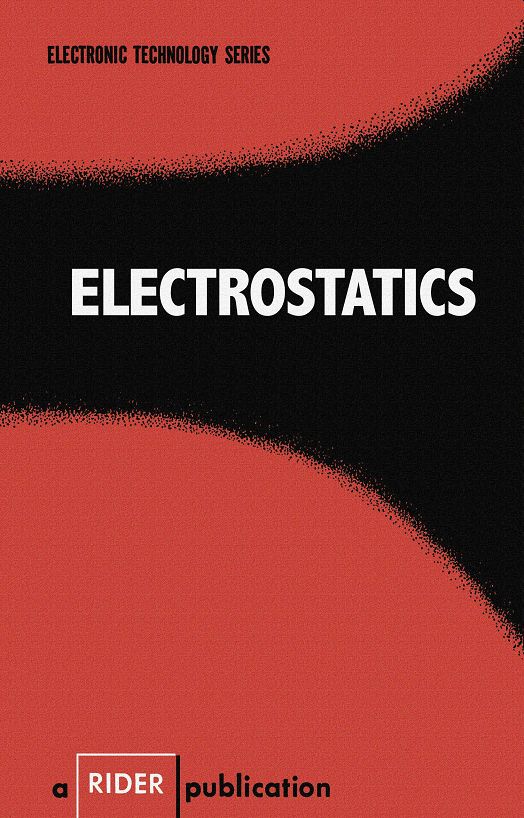AMAZON multi-meters discounts AMAZON oscilloscope discounts
CONTENTS
1. Matter and Electric Charges
2. Unit Systems
3. Nature and Characteristics of the Electric Field
4. Electric Potential, Capacitance, and Capacitors
5. Electrostatic Devices and Applications
This guide is based on the 1958 book:

Introduction
The study of electrostatics, which is concerned with the behavior of electrical charges at rest, is an integral part of electronic technology. The concepts covered in a discussion of electrostatic principles apply in practical and theoretical situations ranging from the action of a capacitor to an understanding of many electrodynamic problems.
The text covers the subject comprehensively and thoroughly.
Using a mathematical treatment that, while simple, is central to the scientific considerations presented, it enables the student or interested technician to obtain a thorough understanding of the given topics that is quantitative as well as qualitative. The guide is firmly grounded on a thorough exposition of relevant physical fundamentals. The topics, once presented, are related to practical situations, such as a novel and interesting description of the earth's electric field. Drill is given in selected problems to afford the reader additional profitable information and an opportunity to apply the principles taught.
Specific attention is given to atomic structure; conductors and insulators; the law of electric charges; electrostatic detection equipment; the triboelectric series; Coulomb's law; unit systems, including the cgs and mks; practical electric units; the nature and characteristics of the electric field; the equation of field intensity; Gauss' Law; charge distribution; oil-drop equations; dielectrics and dielectric constants; electric potential; equipotential surfaces; potential gradient; capacitance and capacitors; and applications such as the Van de Graaff generator. In all, the coverage is sufficiently inclusive to yield a base for further explorations into more advanced work.
Grateful acknowledgment is made to the staff of the New York Institute of Technology for its assistance in the preparation of the manuscript of this guide.
June 1958, New York, N. Y. USA; A.S.
Also see: Vacuum Tube Rectifiers (1958)